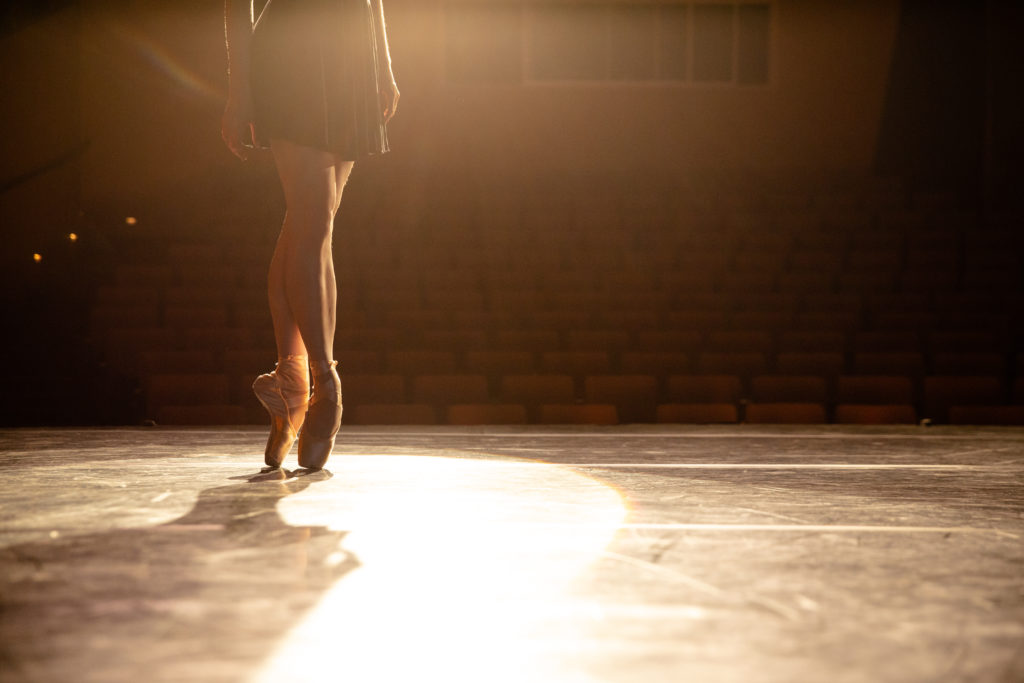The world of dance is large and full of a great deal of variety. From ballet to breakdancing every style has its own language to describe the many movements out there. It can all seem a little intimidating at first glance!
Don’t worry though, we’ve got you covered. Here’s a small sample of some basic terms that you might hear in the classroom just to get you started speaking the language of dance.
8 Count


Most dance is powered by music, and almost all contemporary music that you hear is divided and measured by an 8 count. Simply put, the 8 count is the number of beats in a musical phrase that form a repeating pattern. It’s the very birth of rhythm!
Accent


The accent is the beat in a grouping–usually the first one–that acts as the dominant marker for the pattern. Think of it as a hand clap in a catchy song, or the starter’s pistol or coach’s whistle to let the dancers know when and how to move.
Balance


This is a word that has a lot of meaning in the kinetic language of dance. First and foremost, it means the ability of the dancer to work through their motions with poise, grace, and a minimal noticeable shift in their center of gravity. However, its meaning changes depending on the style of dance. For instance, in ballroom dancing balance refers to the excellence of the dancer’s skill in maintaining posture and form in both movement and stillness; meanwhile in ballet balancé is a pattern where the dancer’s weight is moved back and forth between their feet.
Cha-Cha


You may have heard this word used in a variety of ways, anywhere from an exclamation to a style of shoes! But what is the cha-cha? Simply put, it is the most popular mid-20th century style of Latin American ballroom dancing and originated in Cuba. Known for its marriage of speed and passionate beauty, this partnered dance built on a three step shuffle remains a worldwide favorite in both competition and casual settings.
Plié


One of the fundamental movements in ballet, the plié is essentially the bending of the knees towards the ground while the upper body remains straight and upright. This can be expressed as a demi (small) or grand (large) plié, and if you have ever witnessed any amount of ballet dance from amateur to expert, you have definitely seen a few pliés in action!
Relevé


From the French word meaning “raise,” a relevé is when the dancer raises up the posture of their feet until their weight is either on the balls of their feet (demi-pointe) or on their toes (en pointe). A basic and essential movement in ballet, the relevé can be executed in any of the five positions and when accentuated with a plié is called a spring relevé.
Power Move


In the dynamic world of breakdancing, power moves are the real eye-catchers: the speedy and flailing acts of virtuosity that make the audience go nuts. Paired with the paparazzi photo-pause of freezing, and along with toprock (footwork from a standing position) and downrock (dance moves done on the floor with feet and hands), the power moves are the essential windmill-like explosions that truly sell the genius of breakdancing.
Waltz


Chances are strong that even if you haven’t seen this dance performed, you have heard some of the music that was composed for it. A 3/4 rhythm with a strong accent on the first beat, (ONE-two-three, ONE-two-three, ONE-two-three. Sound familiar?) this elegant dance from the heady ballroom days of 18th century Europe was once the height of style among the powdered wig crowd. Now it’s more of a catch-all term for a partnered dance with the same rhythm. Can you believe that it all started out as a common folk dance?
Box Step


The box step is a basic but essential step in the repertoire of American Ballroom dancing as well as waltzing. Named after the shape that the step pattern forms, a box step allows the leader to move fluidly with their partner while transferring their full weight with each step in the pattern. If you take any ballroom dancing classes, you will be learning and perfecting your box step.
Jazz Hands


Dance isn’t just about the feet and legs, it takes the entire body in a cooperative effort to truly move! Arm styling, for instance, reflects the precise positioning of the upper limbs to properly express a particular genre of dance. Jazz hands is one of the most widely recognized and popular arm movements across many types of dance. From synchronized musicals to swing dancing to cheerleading, this move with palm-out hands and outstretched fingers is universally recognized by beginners and pros.

